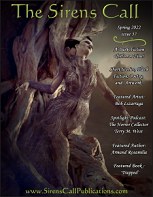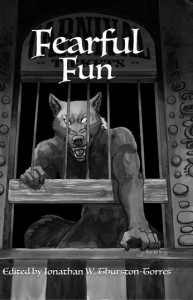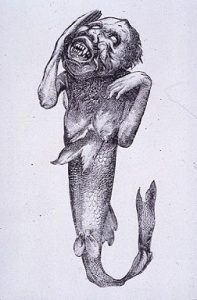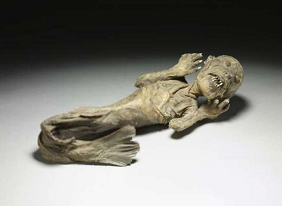
© Cold War Steve
Continuing my rant about miscreants who support Putin and / or are generally making arses of themselves during the current crisis in Ukraine – this time miscreants in the United Kingdom.
Vladimir Putin – presently stuck in a big, bloody hole he’s dug for himself in Ukraine, but still determinedly digging, using thousands of Ukrainian and Russian lives as his shovel-blade – has never been short of pals in Britain. Back in 2001, soon after Putin had won his first presidential election in Russia, and not long after the start of the second Chechen war, which saw the deaths of at least 25,000 civilians, a third of Chechnya deemed a ‘zone of ecological disaster’, and most Chechens left suffering ‘discernible symptoms of psychological distress’, then-British Prime Minister and Labour Party leader Tony Blair jetted out to Moscow and cosied up to Putin. El Tone praised him for showing ‘real leadership’ and giving ‘strong support’ in the ‘fight against terrorism’.
Even today, Blair is hero-worshipped by certain centre-right politicians and commentators in Britain. Ironically, while later Labour Party leader Jeremy Corbyn is commonly loathed and belittled as a traitorous, anti-Western, lefty scumbag, it’s worth recalling what Corbyn said about Blair’s visit to Moscow in 2001. “When the Prime Minister… meets President Putin this evening, I hope that he will convey the condemnation of millions of people around the world of the activities of the Russian army in Chechnya and what it is doing to ordinary people there. When images of what is happening are translated into other parts of the world, many people are horrified…” Exchange ‘Ukraine’ for ‘Chechnya’ and you realise how Corbyn’s words resonate in 2022.
No doubt nowadays Blair keeps his mouth shut about Putin’s supposed statesmanship. But another well-known British politician is less reluctant to express his admiration for the warmongering Russian ogre. Right-winger, Europhobe and wannabe broadcaster Nigel Farage has said of him: “I wouldn’t trust him and I wouldn’t want to live in his country, but compared with the kids who run foreign policy in this country, I’ve more respect for him than our lot.” Meanwhile, the donkey-faced, and full-of-donkey-shit, Farage has made copious appearances on Russia Today, coming out with such gems as the claim that Europe’s modern democracies have been run ‘by the worst people we have seen in Europe since 1945’. Worse even than Putin? Yes, I’m sure Nige thinks so.
By the way, let’s not forget Aaron Banks, Farage’s compadre in the Vote Leave campaign that managed in 2016 to tear the UK out of the European Union, possibly helped by a wee bit of Russian funding. In 2017, Banks did his bit for the Putin cause by tweeting: “Ukraine is to Russia what the Isle of Wight is to the UK. It’s Russian.”
Elsewhere, there’s multiple evidence suggesting that Boris Johnson’s Conservative government, if not totally in love with Putin’s habit of inflicting atrocities on neighbouring countries that annoy him, is certainly in love with the wealth of the Russian oligarchs who surround the man. Recent claims about the amount of donations the Conservative party has received from such oligarchs have ranged from 1.93 million to 2.3 million pounds.
Johnson seems particularly enamoured with members of Russia’s mega-wealthy elite. In 2018, while he was serving as Theresa May’s foreign secretary, he was seen stumbling about an Italian airport suffering from a hangover, and lacking his security detail, after attending a shindig thrown by Russian media magnate Evgeny Lebedev at his castle near Perugia. Lebedev subsequently received a peerage and now, technically, is ‘Baron Lebedev, of Hampton in the London Borough of Richmond on Thames and of Siberia in the Russian Federation’. Johnson has sheepishly denied allegations that he used his influence to secure the peerage for his buddy.

© Private Eye
Though late last week the British government announced it was freezing the assets of seven Russian billionaires (including Chelsea Football Club owner Roman Abramovich) with close ties to Putin, this only came after weeks of prevarication. Originally, it looked like the UK wouldn’t be clamping down on dodgy Russian money until late in 2023, which would have given those likely to be affected a good year-and-a-half to sell their assets and move their money off British soil. Even with this new change of heart, Abramovich and co. have already had a fortnight’s grace-period to shift some of their wealth. Basically, Johnson’s regime is reluctant to do anything that might sully London’s reputation as a haven for dodgy money.
Summing up the absolute state of the Conservative Party on this issue is its wretched co-chairman Ben Elliot. Simultaneously, Elliot’s been sourcing donations from super-rich Russians and been offering services to them in Britain through his ‘concierge’ company, Quintessentially. “Quintessentially Russia has nearly 15 years’ experience providing luxury lifestyle management services to Russia’s elite and corporate members…”, ensuring that from “restaurant bookings to backstage concert access, a bespoke lifestyle is at our clients’ fingertips.” So drooled the blurb on Quintessentially’s website until recently. Then, suddenly and mysteriously, this obsequious drivel was deleted from it.
While we’re heaping abuse on the British government, we shouldn’t overlook the smirk-faced Priti Patel, who – until another apparent U-turn last week – seemed determined that the Ukrainian refugees Britain was allowing in should be vastly outnumbered by the Russian oligarchs it was welcoming with open arms. At one point, while other European countries had taken in Ukrainian refugees in the tens of thousands, the UK had dished out a mere 50 additional visas to them.
Besides Patel, it’s worth castigating government minister Kevin Foster, who advised people fleeing Ukraine to apply to Britain’s ‘seasonal worker scheme’, which would allow them to spend their time in the country picking fruit. Such humanity, Kev! Also, some hatred should be directed towards whatever nasty piece of work in the Home Office complained to the Daily Telegraph that Ireland had allowed in too many Ukrainian refugees. All those shifty Ukrainians, claimed the anonymous source, would “come through Dublin, into Belfast and across to the mainland to Liverpool”, thus creating “a drug cartel route.”
Needless to say, Britain’s resident community of publicity-seeking, rent-an-opinion gobshites have fastened onto the Ukrainian crisis like flies fastening onto a cow-plop. George Galloway, that fedora-wearing gasbag whose rhetoric seems to weave between old-school socialism (when he’s in England) and hardline British nationalism (when he’s in Scotland), and who’s a fixture on the Russian-owned Sputnik radio channel, tweeted recently: “Me, Farage, Hitchens, Carlson and Rod Liddle are a pretty broad front of people who think NATO expansion to the borders of Russia was a pretty bad idea. Maybe pause and think about that?” When I paused and thought about it, my immediate thoughts were: “George Galloway, Nigel Farage, Peter Hitchens, Tucker Carlson, Rod Liddle… Wow, what a team! Couldn’t Marvel make a superhero movie about them? Maybe call it Arseholes Assemble?”
Hilariously, Galloway’s Putin-sympathetic stance has ended all unity in the All for Unity party, the staunchly pro-UK outfit he set up in Scotland prior to the last Scottish parliamentary elections. Jamie Blackett, the party’s former deputy leader, and also the Deputy Lieutenant for Dumfriesshire and a Daily Telegraph writer, recently disowned his old boss and announced the disbanding of the party.
Meanwhile, Neil Oliver, the alleged Scottish historian and talking head on right-wing outlet GB News, lately delivered a bewildering monologue, the gist of which was: “I’ll be honest. I don’t know what’s happening in Ukraine. I don’t understand it either.” Oliver’s professed ignorance of the situation didn’t stop him talking about it for nine minutes, however. It’s also strange that when it comes to Putin and Ukraine Oliver is so hesitant to climb off the fence, considering how quick he’d been in the past to condemn, say, the Scottish National Party (‘disastrously incompetent’, ‘small’, ‘not worth bothering about’), or the Black Lives Matter movement (‘anarchists and communists’ eating ‘into the built fabric of Britain’). Very strange indeed.
One other thing bugging me about Putin’s current horror show is how certain people have pounced on it and tried to use it to promulgate the right-wing agendas they’ve been pushing for years already. Take the ‘culture wars’, in which Putin’s ‘anti-woke’ position had until recently won accolades from Western pundits on the right of the spectrum. Well, now that Putin is officially a Bad Lad, they can’t praise him directly anymore. Instead, they’re pushing the narrative that woke stuff no longer matters during the crisis that good old Vlad, sorry, bad new Vlad has created.
Here’s the absurd Daily Telegraph columnist Allison Pearson, recently opining: “The outbreak of war has shone an unflattering light on our society… Watch issues like LGBT, net-zero, Partygate, Black Lives Matter and farcical ‘Stay Safe’ Covid restrictions all fade into well-deserved insignificance now that war is back.” According to Pearson, in other words, now that Putin’s behaving like a c*nt, we should all stop fretting about being civil to our fellow human beings, about preventing them from dying of Covid, about preventing the planet from burning up, and about our leader Boris Johnson being a lying, unprincipled sack of shite.
And here’s the barmy Spectator pundit Lionel Shriver, writing: “Decolonisations, contextualisations, gender-neutralisations – it’s all a load of onanistic, diversionary crap, and the West having shoved its head up its backside is one reason that Putin feels free to do whatever he likes.” Though I suspect Putin would still have attacked Ukraine if fewer people on Western social media had been using the pronouns ‘they’ / ‘them’ in their profiles.
One last thing for which Britain’s right-wingers must be thanking Putin is the attention he’s diverted from the looming issues of manmade climate change and the dire state of the environment. Thanks to the headlines being dominated by Ukraine, not much attention has been given to, for instance, the apocalyptic floods that have stricken Queensland and New South Wales. And, somewhat inevitably, the afore-mentioned Nigel Farage is currently trying to relaunch his political career by demanding a new national referendum – this time, not about the UK’s membership of the European Union, but about the British government’s supposed adoption of Net Zero policies to combat climate change. Farage, of course, wants us to vote against them.
I wonder why he’s doing this. Could he be thinking of a country that helped finance his previous, successful referendum campaign? Or could he be thinking of an oil-exporting country that would stand to gain if Britain gave up on green energy and became wholly dependent on fossil fuels again?
I can’t possibly think of a country that falls into both categories.

© The Jewish Chronicle / twitter / @ VirendraSharma















